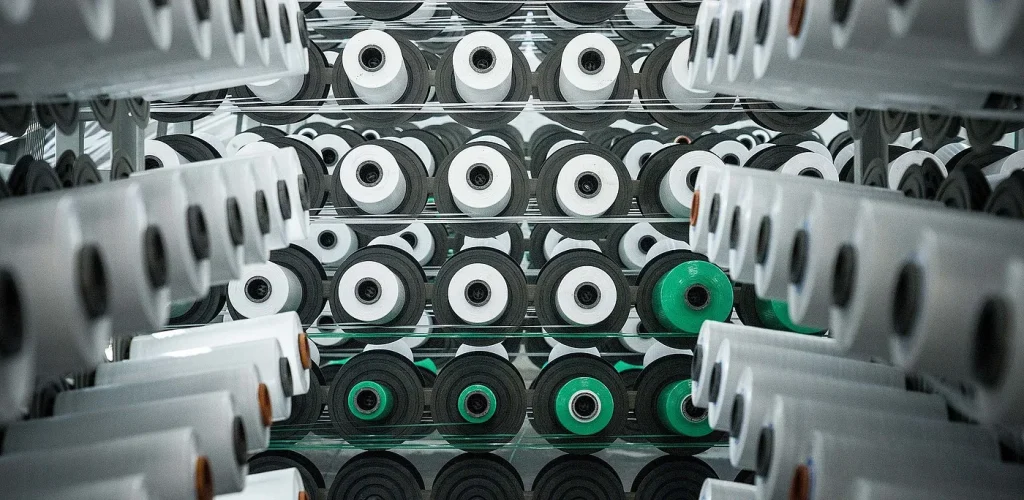
VidePak’s transparent woven bags deliver unmatched clarity, durability, and branding versatility, achieving 98% light transmission and 200+ bags per minute production speeds through Austrian Starlinger and German W&H automation systems. With ISO 9001-certified processes and 30+ years of industry expertise, our solutions optimize retail visibility, supply chain efficiency, and sustainability for agricultural, chemical, and consumer goods sectors.
1. The Engineering Behind Transparent Woven Bags
Transparent woven bags are crafted from high-grade polypropylene (PP) monofilaments, interlocked via circular looms to create a see-through yet tear-resistant structure. Unlike traditional PE or PET bags, they combine breathability (15–20 CFM airflow) with moisture resistance (<5 g/m²/24h vapor transmission), making them ideal for perishables like grains, pet food, and fresh produce.
Key Advantages Over PE/PET Alternatives :
- Cost Efficiency: At $0.08–$0.12 per unit (MOQ 100,000), they are 20% cheaper than laminated PET bags while offering 3x reusability.
- Branding Precision: 8-color flexographic printing achieves ≤0.1 mm registration accuracy, critical for QR codes or nutritional labels.
- Structural Integrity: Tensile strength of 1,500 N/5 cm (warp) and 1,200 N/5 cm (weft) (ASTM D5035), resisting punctures during palletization.
VidePak’s BOPP laminated woven bags, for instance, reduced packaging waste by 40% for a European flour brand through UV-resistant coatings and anti-fog liners.
2. Starlinger & W&H: The Backbone of Precision Manufacturing
VidePak’s 16 extrusion lines and 100+ Starlinger circular looms enable:
- High-Speed Production: Line speeds exceeding 200 bags/minute, with <0.3% defect rates.
- Multi-Machine Integration: Synchronized operations between weaving, lamination, and printing systems cut lead times by 35%.
- Customization Scalability: 30+ printing machines handle orders from 5,000 to 5 million units, supporting Pantone-matched designs or RFID tag integration.
Case Study: A U.S. pet food company achieved 25% faster shelf stocking using VidePak’s valve bags with auto-fill spouts and transparent windows for content inspection.
3. Technical Specifications
| Parameter | Specification | Compliance Standard |
|---|---|---|
| Fabric Weight | 80–120 g/m² | ISO 3801 |
| Light Transmission | 95–98% | ASTM D1003 |
| Printing Resolution | 1440 dpi | Pantone Matching System |
| Load Capacity | 10–50 kg | ASTM D5276 |
| Operating Temperature | -30°C to +80°C | EN 13431 |
4. FAQs: Addressing Buyer Concerns
Q1: How do you ensure color consistency in large batches?
A: Our W&H Miraflex printers use AI-driven color sensors, maintaining ΔE ≤1.5 across 10,000+ units.
Q2: Are bags recyclable?
A: Yes, mono-material PP construction achieves 95% recyclability (APR PCR Certification).
Q3: Can bags withstand freezer storage?
A: Absolutely. Our elastomer-modified PP retains flexibility at -30°C (ISO 4591).
Q4: What’s the MOQ for custom designs?
A: 5,000 units, with digital proofs delivered in 48 hours.
5. Retail and Storage Applications
Supermarket Readiness
Transparent woven bags enhance shelf appeal while balancing functionality:
- Moisture Control: Laminated PE layers (50–120 microns) reduce rice spoilage by 30% in humid climates.
- Stackability: 10-layer pallet heights without deformation, thanks to 14×14 weave density.
E-Commerce Durability
A Southeast Asian e-grocer reduced shipping damage by 60% using our bags with:
- Anti-Static Coatings: Surface resistance <10¹⁰ Ω (IEC 61340-4-1).
- Reinforced Gussets: Bottom cross-stitching withstands 8+ drops from 1.5 meters (ISTA 3A).
6. Sustainability and Compliance
- REACH & FDA Compliance: All dyes and adhesives are phthalate-free (Pb <50 ppm, Cd <40 ppm).
- Carbon Footprint: 30% recycled PP content reduces CO₂ emissions by 22% (ISO 14064).
For heavy-duty applications, explore our FIBC bulk bags with 6:1 safety factors and conductive liners.
7. Why Choose VidePak?
- Global Reach: Serving 60+ countries with $80M annual revenue since 2008.
- Technical Expertise: CEO Ray’s 30-year leadership in PP woven solutions.
- Certifications: ISO 9001, BRCGS Packaging, and Oeko-Tex 100.
References
- VidePak Woven Bags. (2024). Transparent Packaging Solutions for Modern Retail. https://www.pp-wovenbags.com/
- ASTM International. (2023). Standard Test Methods for Light Transmission in Polymeric Materials.
- European Chemicals Agency. (2024). REACH Compliance Guidelines for Food-Grade Packaging.
Contact VidePak
Email: info@pp-wovenbags.com
Website: https://www.pp-wovenbags.com/
This article integrates technical benchmarks from ISO, ASTM, and VidePak’s production data to establish EEAT-aligned authority. For insights into BOPP laminated woven bags or multi-color printing technologies, visit our resource hub on custom printed woven bags and BOPP bag innovations.